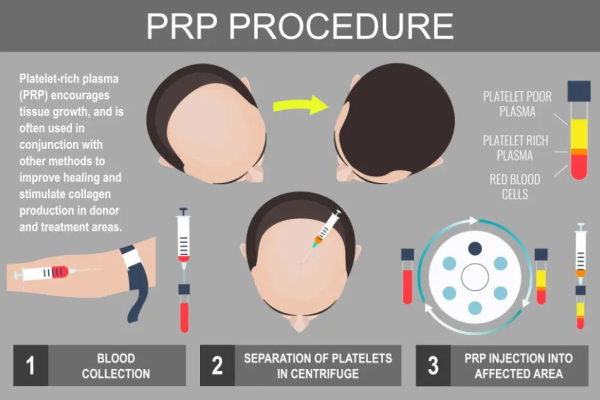PRP (platelet-rich plasma) therapy for hair loss has 3 important steps, each step takes approximately 1.5 months. Firstly, the patient’s blood is taken and kept in a centrifuge.
Secondly, for nearly 10 minutes, the blood is taken back from the centrifuge and examined in 3 layers; namely, platelet-poor plasma, platelet-rich plasma, and red blood cells.
Thirdly and lastly, with the help of a syringe, the platelet-rich plasma is taken and injected back to the patient’s body where there is substantial hair loss.
Although this method is in the stage of investigation and has so many optimistic results, however, more research needs to be done. PRP might have some side effects, such as it is prone to infection.
PRP treatment is not very new, it has been used in maxillofacial and cardiovascular surgery for decades, and has also taken its place in cosmetics and antiaging as well as in the treatments of musculoskeletal injuries and skin/wound/tissue damage.
PRP has a lot of advantages over other treatments, as such, it is regenerative and restructuring.
PRP is a method used frequently to fight against baldness or falling hair.
PRP for Hair Transplant Aftercare
PRP is also widely used as an aftercare treatment for patients who have undergone hair transplants. The growth factors in PRP help accelerate healing, reduce scarring, and improve the survival rate of transplanted hair follicles. our clinic in tehran offer PRP as part of their post-transplant care packages to maximize the results of hair restoration surgeries.
Patients are typically advised to start PRP sessions about a month after their transplant surgery, with follow-up treatments every three months to enhance growth and recovery.
Frequently Asked Questions about PRP Treatment for Hair Loss in Iran
How the PRP treatment applied?
PRP treatment is mostly applied with the separation of the platelet-rich-plasma fraction in platelets by subjecting a tube of blood taken from the vein to some processes.
Platelet-rich plasma is taken by separating it from other components of whole blood by centrifugation method.
Upon getting the platelet-rich-plasma fraction, it is applied to the face, scalp or a chronic wound area with the help of an apparatus that is called “roller” which makes makes micro-holes on the skin, or with the help of laser.
Afterwards, the growth factors reaching high amounts attract the tissue regenerative and blood supply-enhancing cellular elements of the defense system to the region.
These cells also ensure rapid tissue regeneration and better oxygenation of the cells in the area by increasing circulation.
What is the success rate of PRP treatment for hair loss in Iran?
Although PRP is a new technique used particularly in tissue repairing, etc. in the past, however, PRP has been proving itself in the era of hair treatment, too. The treatment has yielded a lot of good results up to 70 or 90%, even after 4 or 6 treatments.
Just like in other hair treatment methods, it is advisable not to consume unhealthy substances, including alcohol, smoking, or else the hair growth may lose its efficiency.
Effectiveness of PRP for Hair Loss
PRP is most effective for patients with androgenetic alopecia, a common form of hair loss affecting both men and women. Studies show that PRP can help increase hair thickness and density by stimulating dormant follicles.
Results usually become noticeable after three to four months, with significant improvement in hair volume and strength. The treatment is also beneficial for patients who are not ready for surgical interventions like hair transplants, making PRP an excellent option for early-stage hair loss.
However, results may vary depending on the individual’s hair health and treatment adherence.

